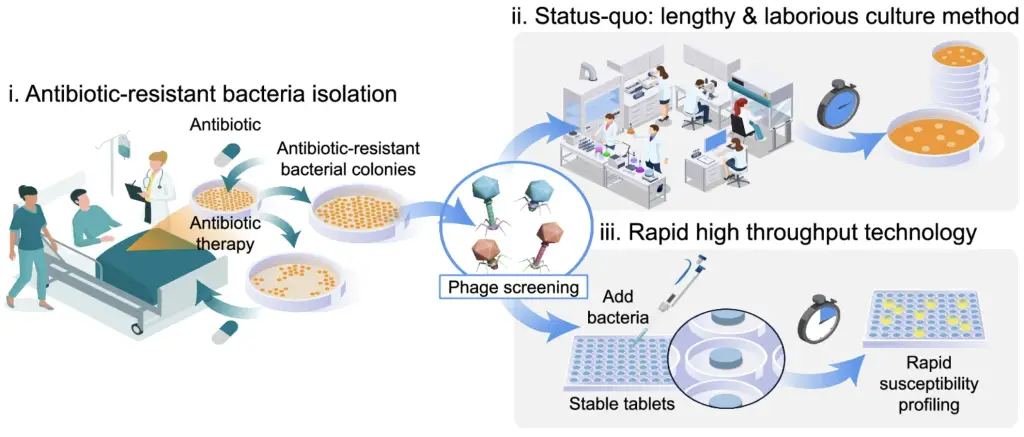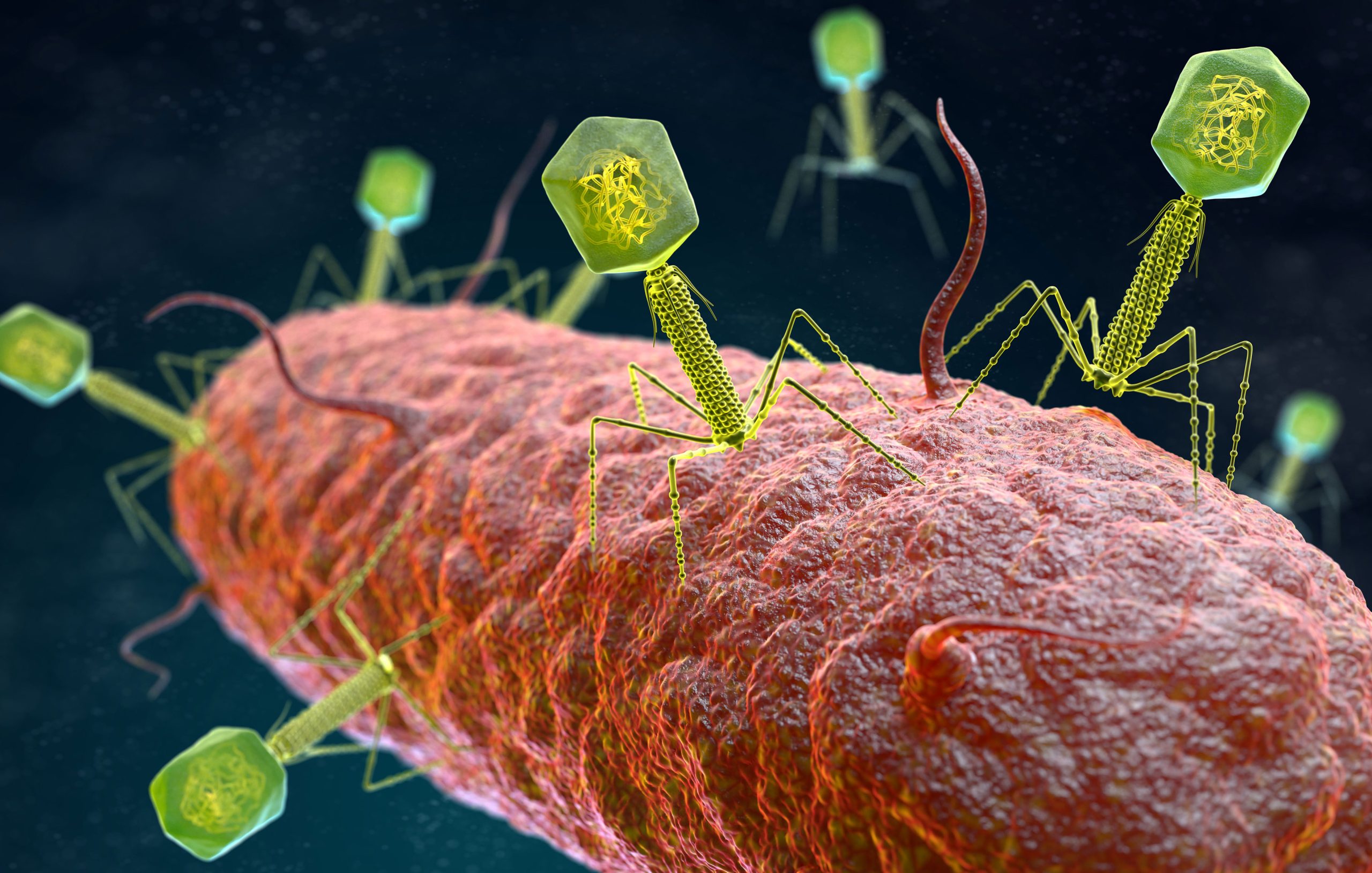
A recent study has been published in Nature Communications about a technology that involves creating a pill-like substance containing phages and a kit for phage susceptibility testing. A new, compact kit the size of a paperback book that significantly improves the efficiency of identifying bacteriophages that respond to antibiotic-resistant superbugs. Developed by researchers at McMaster University and Université Laval, this innovative kit provides a streamlined method to store, identify, and share phages, making them readily accessible for urgent medical needs.
When a patient needs a phage, one of the most important steps to follow is screening the phages from the laboratory stock to find a suitable phage to target the patient’s bacteria. For phage scientists (especially for those with large phage bank facilities), screening for the right phages from their phage bank can be time-consuming and tedious, as it may involve numerous activities. The time spent on screening phages can be critical, potentially costing someone’s life, as the screening process may take from a day to several days depending on the pathogen’s susceptibility to the phages in stock, the method used, the viability of the phage isolates, and the quantity of phage stock.

The new technology addresses these challenges with a dry storage platform that allows phages to be stored without refrigeration. This platform includes a novel, pill-like medium that combines phages with luciferin and luciferase enzymes stabilized in a sugar matrix. This matrix, composed of pullulan and trehalose, enhances desiccation tolerance, allowing the phages to be shelf-stable and easily transported for long distances. The medium produces a bioluminescent glow when a phage responds to a target infection, directly detecting phage-mediated adenosine triphosphate (ATP) release through an ATP bioluminescence reaction upon bacterial cell burst.

This portable testing tray can hold tenths to hundreds of phage samples hugely depending on microtiter plate capacity. To use the kit, a sample of the target bacterium is added to each well of a pre-loaded microtiter plate, and any positive results become visible within 30 to 120 minutes. This high-throughput screening method allows for rapid identification of target phages from decentralized biobanks, making it a transformative technology in the fight against hard-to-treat infections.
Researchers demonstrated the effectiveness of this system by identifying target phages for multidrug-resistant clinical isolates of Pseudomonas aeruginosa, Salmonella enterica, Escherichia coli, and Staphylococcus aureus.
This technology has the potential to revolutionise the use of phages in both medicine and agriculture, akin to the reporter phage I previously discussed months ago. These solutions integrate a biobank and testing kit into one compact package, providing a cost-effective and efficient approach to enhancing accessibility to phage therapy. With commercial applications on the horizon, this technology has the potential to reshape the utilization of phages for diverse therapeutic purposes, addressing the escalating global challenge of antibiotic resistance.
For more information on the study read: Bayat, F., Hilal, A., Thirugnanasampanthar, M. et al. High throughput platform technology for rapid target identification in personalized phage therapy. Nat Commun 15, 5626 (2024). https://doi.org/10.1038/s41467-024-49710-2. Both photos came from Bayat et al, 2024.



Great work